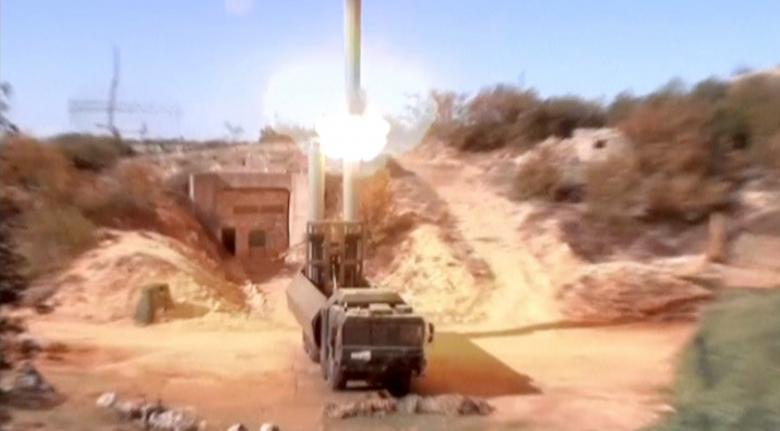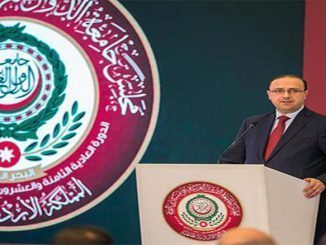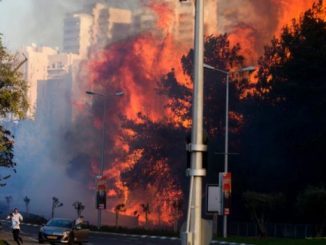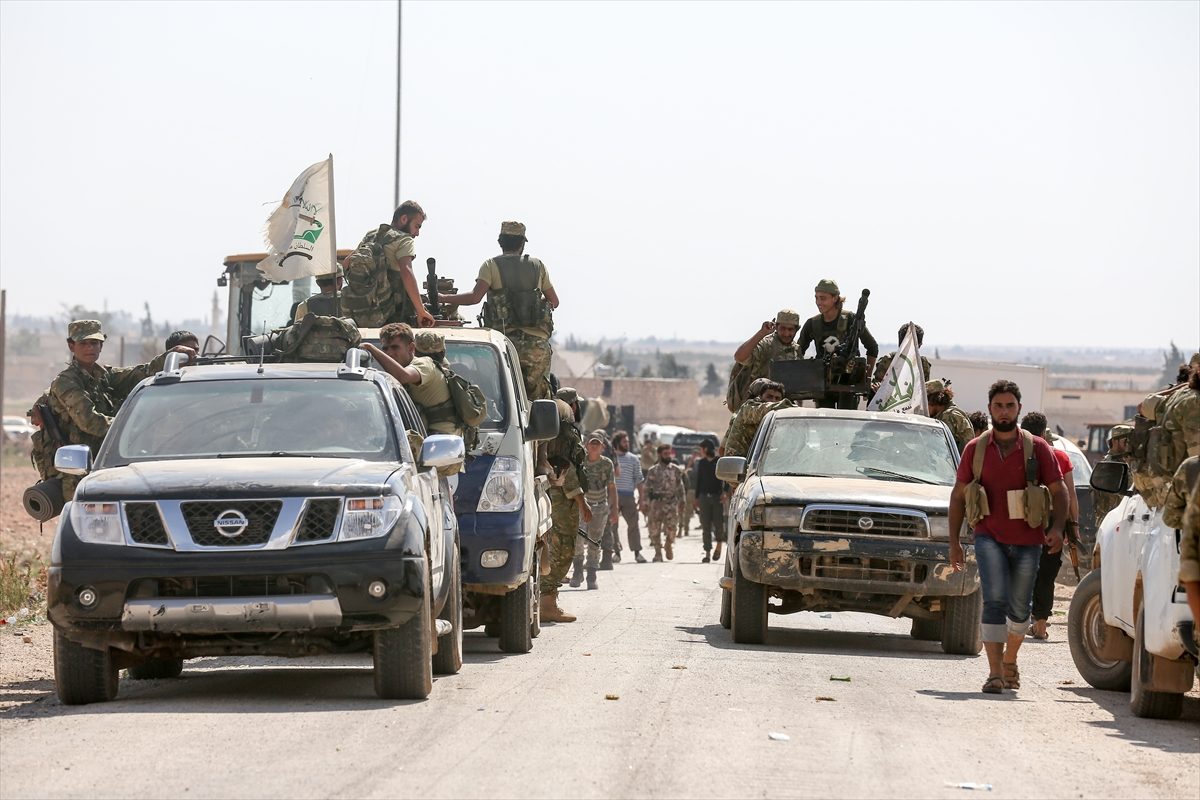
Russia launched coordinated missile strikes against rebels in Syria on Tuesday and Moscow for the first time used its only aircraft carrier in combat, hours after Trump and Putin discussed the need to join forces to combat international terrorism.
Trump, who expressed respect for Putin during the campaign, spoke with the Russian leader by phone Monday. The two leaders discussed a range of issues including “threats and challenges facing both nations,” the Trump transition team said in a statement
The Trump camp did not say whether the two leaders had discussed Syria on the Monday evening telephone call, but the Kremlin said they agreed on the need for joint efforts to fight terrorism and discussed the possibility of a settlement to the five-year Syrian conflict.
Putin was one of the first foreign leaders to congratulate Trump on November 9, noting specifically that Russia and the US shared a special responsibility to “sustain global stability and security”. It played well into Trump’s statement from last summer: “Wouldn’t it be nice if we got together with Russia and knocked the hell out of ISIS?”
One of the first things Trump is expected to do is coordinating with Putin to attack ISIS and also allowing Assad to remain in power
Trump said in one presidential debate: “I don’t like Assad at all, but Assad is killing ISIS. Russia is killing ISIS and Iran is killing ISIS,” indicating that he would worry less about consistent American relationships in the Middle East and more about defeating ISIS and getting the US out of the region.
Aircraft carrier used for the first time
Russian defense Minister Sergei Shoigu said a frigate had fired cruise missiles, jets from the Admiral Kuznetsov, Russia’s sole aircraft carrier, had been involved in action, and missiles had been loosed from a mobile land-based missile system inside Syria.
“For the first time in our naval history, the aircraft carrier Admiral Kuznetsov started taking part in combat,” Shoigu said. “Today from this carrier, our Sukhoi-33 began their operations.”
Reporting to President Vladimir Putin in southern Russia, Shoigu said Russia had targeted sites associated with Islamic State and the Nusra Front, which has changed its name to Fateh al-Sham, in the Homs and Idlib provinces.
“We carried out exhaustive advance research on all targets,” said Shoigu. “We are talking about warehouses with ammunition, terrorist training centres … and factories.”
In the northwestern province of Idlib, a member of the Jund al-Aqsa group, known as Abu-Dardaa-al-Shami, said that the air strikes were “much, much, much more intense than previous ones”. He added that in addition to the air raids, ballistic missiles hit the province near the town of Saraqeb.
Activists said that Phosphorus bombs were used also in attacking al-waer besieged area in Homs city. Images and videos published online showed large fires and burnt bodies.
The arrival of a Russian aircraft carrier, the Admiral Kuznetsov, into the Mediterranean and its heading to the Syrian coast suggested Moscow may intend to escalate its operations and deal one last blow to the rebels.
The Russian Northern fleet battle group, consisting of Admiral Kuznetsov, the Pyotr Velikiy battle cruiser, two large anti-submarine ships Severomorsk and Vice-Admiral Kulakov as well as support vessels, arrived in the Mediterranean in early November.
Earlier this week, Russian Defense Ministry said that the planes and vessels from the battle group are ready to attack the rebels’ targets on the outskirts of Syria’s Aleppo, help in retrieving it from their hands and preventing more rebels to advance to the city.
Between the ground the trees burning
There's Humans burning too, Just try to find them, it's really #JUDGEmentday in #Syria because of ?? pic.twitter.com/K58pna7ygB— Ahmad Alkhatib (@AhmadAlkhtiib) November 15, 2016
Graphic images +21
What you're seeing in this pictures is Humans, Civilians were burned by #Russian phosphor in #Alweaar Suburb of #Homs pic.twitter.com/WBEg6068du— Ahmad Alkhatib (@AhmadAlkhtiib) November 15, 2016
Airstrikes resumed on Aleppo city
In addition to the Russian bombing around Syria, Intense air strikes have hit several rebel-held areas in Aleppo for the first time in more than two weeks, after the previous airstrikes were concentrated on Aleppo’s countryside.
The Syrian Observatory for Human Rights said air strikes in addition to missiles fired from Russian warships shook the provinces of Idlib and beleaguered Aleppo.
Syrian state television said government jets carried out attacks against what it called “terrorist strongholds” and supply depots in the old city of Aleppo, citing what it described as “special sources”.
“There were some 30 air strikes and three people have died so far,” said Hisham Skaff of the Fastaqem Kama Umirt rebel brigade in Aleppo. “This is very scary.”
“Our houses are shaking from the pressure. Planes are soaring above us, and the bombardment is around us,” Modar Shekho, a resident of rebel-held eastern Aleppo, told Reuters.
“It’s all air strikes and parachute bombs. Today, the bombing is violent … There hasn’t been this kind of attack in more than 15 days,” said Ibrahim Abu al-Laith, an Aleppo-based spokesman for the Syrian Civil Defence group, adding fighter jets and helicopters were still visible in the sky.
“In the last few hours at least nine neighborhoods inside the city of Aleppo have come under intense bombardment,” al-Jazeera reported.
“Residents from inside Aleppo tell us that there is chaos and mayhem in the streets – where there are streets still remaining. Many parts of Aleppo have been cut off from other areas because they were targeted in earlier air strikes and roads were taken. Medics say they are trying to reach those areas, but they are still stuck inside their homes because enemy aircraft are still in the air,” al-Jazeera added.
“In the northern part of Aleppo, air strikes have been the most intense and activists there tell us that this is where they expect that a ground incursion will occur.”
The Assad regime forces, backed by Russian air power, Iranian ground forces and Shi’ite militia fighters from Iran, Iraq, and Lebanon, has been tightening its grip on rebel-held districts of Aleppo this year, and this summer achieved a long-held goal of fully encircling the area.
There are about 275,000 people trapped by the siege of eastern Aleppo, where civilians are suffering through daily bombing, including by bunker-buster and incendiary weapons, and through starvation, as limited supplies run out and aid convoys are blocked from the city.
Recovering full control of the rebels’ last significant urban area would be the most important victory of the war so far for Assad, strengthening his control over Syria’s most populous and strategically important regions.



